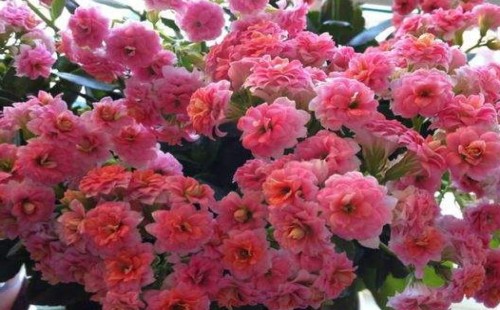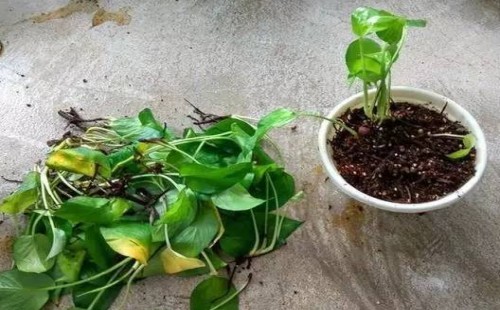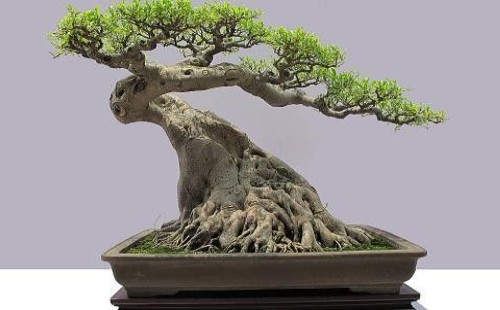How to raise longevity flowers to burst the pot?
Longevity flowers are not only beautiful flowers, but also suitable for viewing flowers as potted plants, and the leaves are also very beautiful, so they are also suitable for viewing leaves. And the flowering period of longevity flowers is relatively long, often from December of the previous year to April of the next year. Compared with many flowers and plants, the flowering period of 4 months is not very long, but it is also longer than that of ordinary flowers and plants.

Since the flowers and leaves of longevity flowers are suitable for viewing leaves and suitable for potted cultivation, if they can be cultivated in pots, they will naturally be more beautiful and will inevitably achieve the effect of icing on the cake. So, how to raise longevity flowers in order to burst the pot?
1. Soil
Longevity flowers prefer soft, breathable and permeable basin soil environment. Rotten leaf soil, vegetable garden soil and sand soil can be mixed and made into culture soil according to a certain proportion. If we feel that the permeability is not strong enough, we can also add an appropriate amount of perlite and some compound fertilizer as base fertilizer. In this way, not only the pot soil permeability is good, but also more fertile, more suitable for the growth of potted longevity flowers.
Second, lighting
Longevity flowers prefer light, so they should be provided with adequate light conditions in both growing season and flowering period. If there is not enough light during the growing period, it will not be able to carry out normal photosynthesis and provide protection for the normal growth activities of the plant. at the same time, it may also lead to the phenomenon of no flowering, less flowering and leaf loss, and seriously reduce the ornamental value. But in summer to avoid hot sun exposure, otherwise the plant may be sunburned.
Third, temperature
As long as the ambient temperature can be kept between 15 ℃ and 30 ℃, the growth of plants can often be protected from temperature. In summer, it is necessary to properly shade and spray water to cool and moisturize, and to regulate the temperature in winter. Usually, the ambient temperature needs to be kept above 10 ℃ to survive the winter safely, and at the same time, it can blossom smoothly in December. Therefore, it is usually appropriate to put the potted plants indoors near the windowsill to be ventilated and sunny in winter.
Fourth, watering
In spring and autumn, as the temperature is relatively mild, watering of potted longevity flowers usually needs to be dried, original and in order to keep the potted soil moist, so watering should not be excessive; plants are easy to enter semi-dormant loading under high temperature in summer, watering should be controlled to avoid the emergence of hot and humid environment, while strengthening ventilation and spraying more water to keep moist; before flowering in winter, enough water should be watered to support flowering. Usually wait until the soil below the basin soil is 3-5 cm away from the soil surface and then water it. At the same time, pay attention to observe the permeability of the basin soil. If there is a slight consolidation, it is necessary to loosen the soil in time; if the permeability is too poor, it is necessary to turn the basin and change the soil in time.
IV. Fertilization
The focus of fertilization for longevity flowers is to promote bud formation and flowering, and it is usually possible to apply thin and rotten organic liquid fertilizer 1-2 times a month; when it is hot in summer, longevity flowers are easy to enter semi-dormancy loading, so it is necessary to stop fertilization in time; it is necessary to increase topdressing before flowering in autumn and winter, which can promote the formation and differentiation of flower buds and ensure that there are enough nutrients to support and bloom during flowering, mainly with phosphate and potassium fertilizer.
Fifth, pick the heart
When the young plants of potted longevity flowers grow to a certain height, the coring treatment should be carried out reasonably according to the growth status of the plants, so as to avoid excessive growth and affect the pregnant buds and inhibit the phenomenon of flowering or less flowering. Therefore, coring should start from the young plant, and it needs to be picked many times during the period to promote the germination of more branches, especially the formation of flower branches, so as to ensure that the plant can maintain normal flowering while growing luxuriantly.
6. Pruning
At the end of the flowering period of pot longevity, we should prune in time, mainly to cut off the residual flowers and withered old leaves to avoid wasting nutrients, affecting the recovery of plant growth, and then affecting the next round of flowering.
When the flowers on the branches are in full bloom, in addition to cutting off the residual flowers, it is also necessary to cut off the first pair of leaflets and retain the second pair of leaflets, which is more conducive to the emergence of new flower branches. After topping and picking leaves, the newly germinated twigs and leaves can form more flower branches, thus realizing the second round of flowering.
Of course, if we want to promote the second flowering of potted longevity flowers as scheduled, we also need to regulate the temperature in the plant growth environment, combined with basin change, pruning, water and fertilizer and other aspects of management and protection work. At that time, we will not only usher in the second flowering, but also reap the joy of breaking the pot again.
Time: 2019-05-29 Click:
- Prev

Will the green apple die if it wilts after changing the basin?
Green pineapple is one of the most popular green plants in family potted plants. although it is also easy to raise, it also needs our attention. after all, there is something to pay in return. Especially after 1-2 years of cultivation, it is necessary to change the pot in time, because the green pineapple has strong root germination ability and under suitable growth environment.
- Next

How to make bonsai trees thicker
For bonsai creators, in order to pursue the highest ornamental value and artistic effect, they often try their best to make bonsai trees grow better and shape more beautiful. Among them, it is more common to thicken the branches of bonsai trees. Obviously, for many bonsai trees
Related
- Fuxing push coffee new agricultural production and marketing class: lack of small-scale processing plants
- Jujube rice field leisure farm deep ploughing Yilan for five years to create a space for organic food and play
- Nongyu Farm-A trial of organic papaya for brave women with advanced technology
- Four points for attention in the prevention and control of diseases and insect pests of edible fungi
- How to add nutrient solution to Edible Fungi
- Is there any good way to control edible fungus mites?
- Open Inoculation Technology of Edible Fungi
- Is there any clever way to use fertilizer for edible fungus in winter?
- What agents are used to kill the pathogens of edible fungi in the mushroom shed?
- Rapid drying of Edible Fungi

